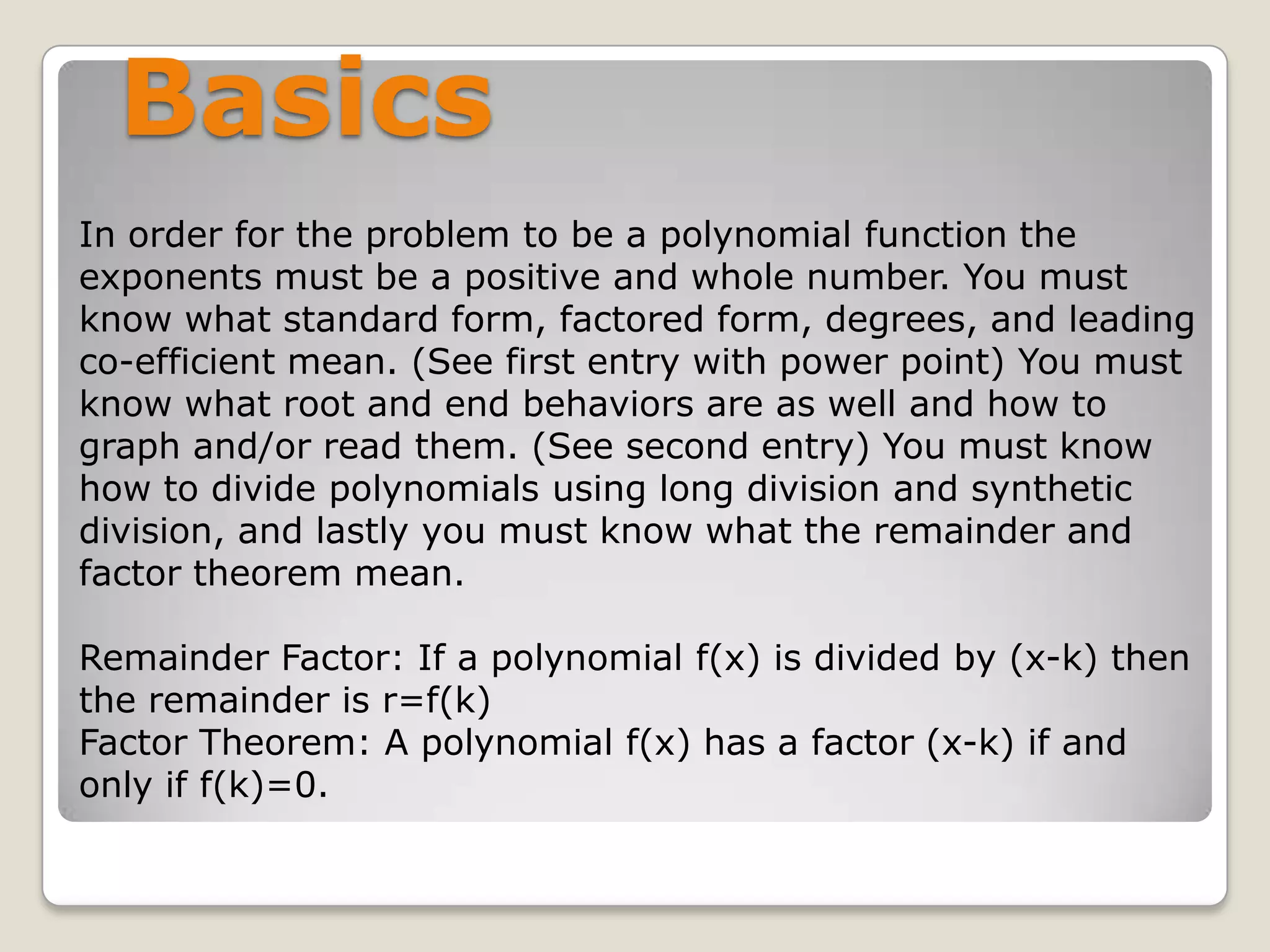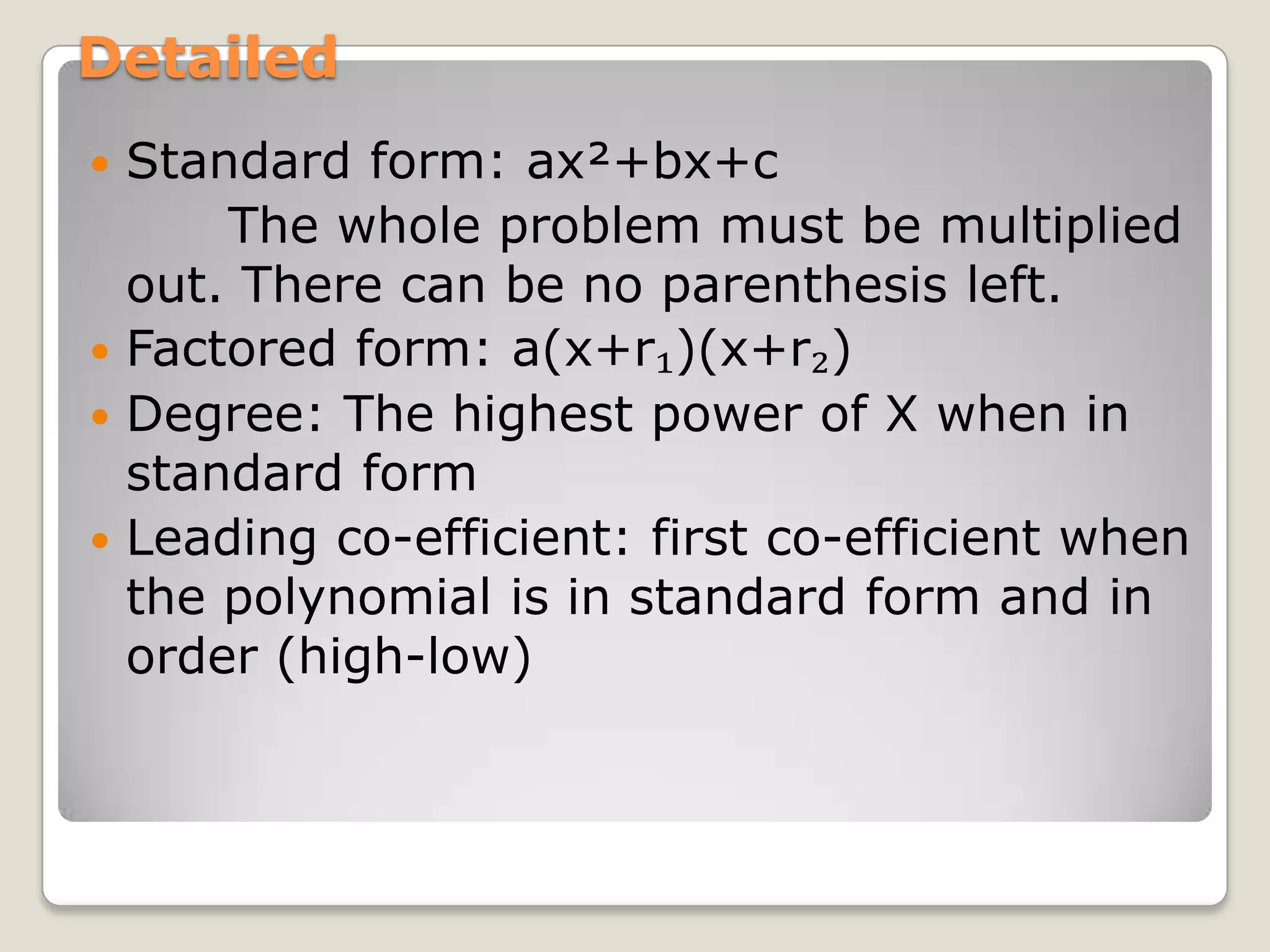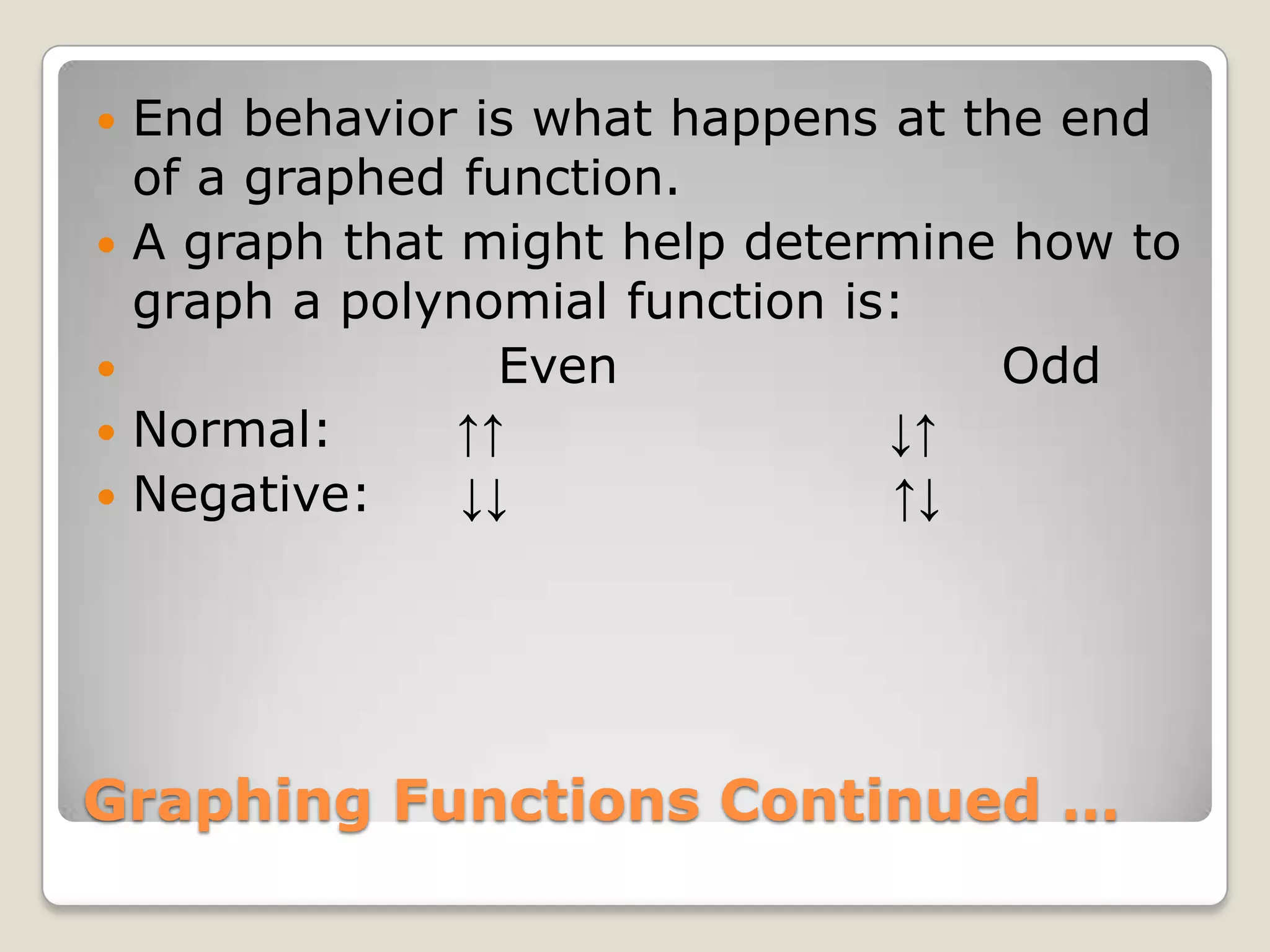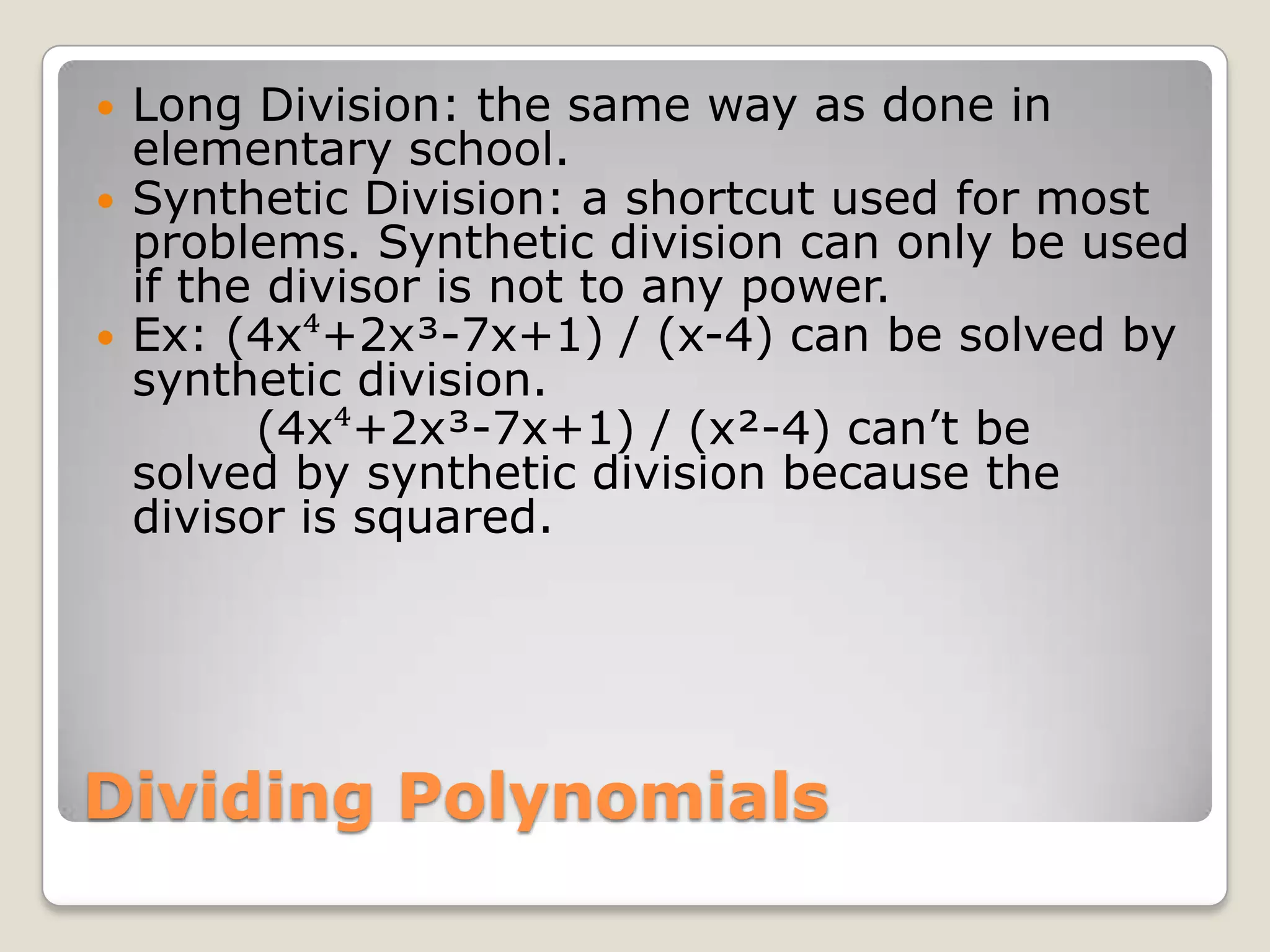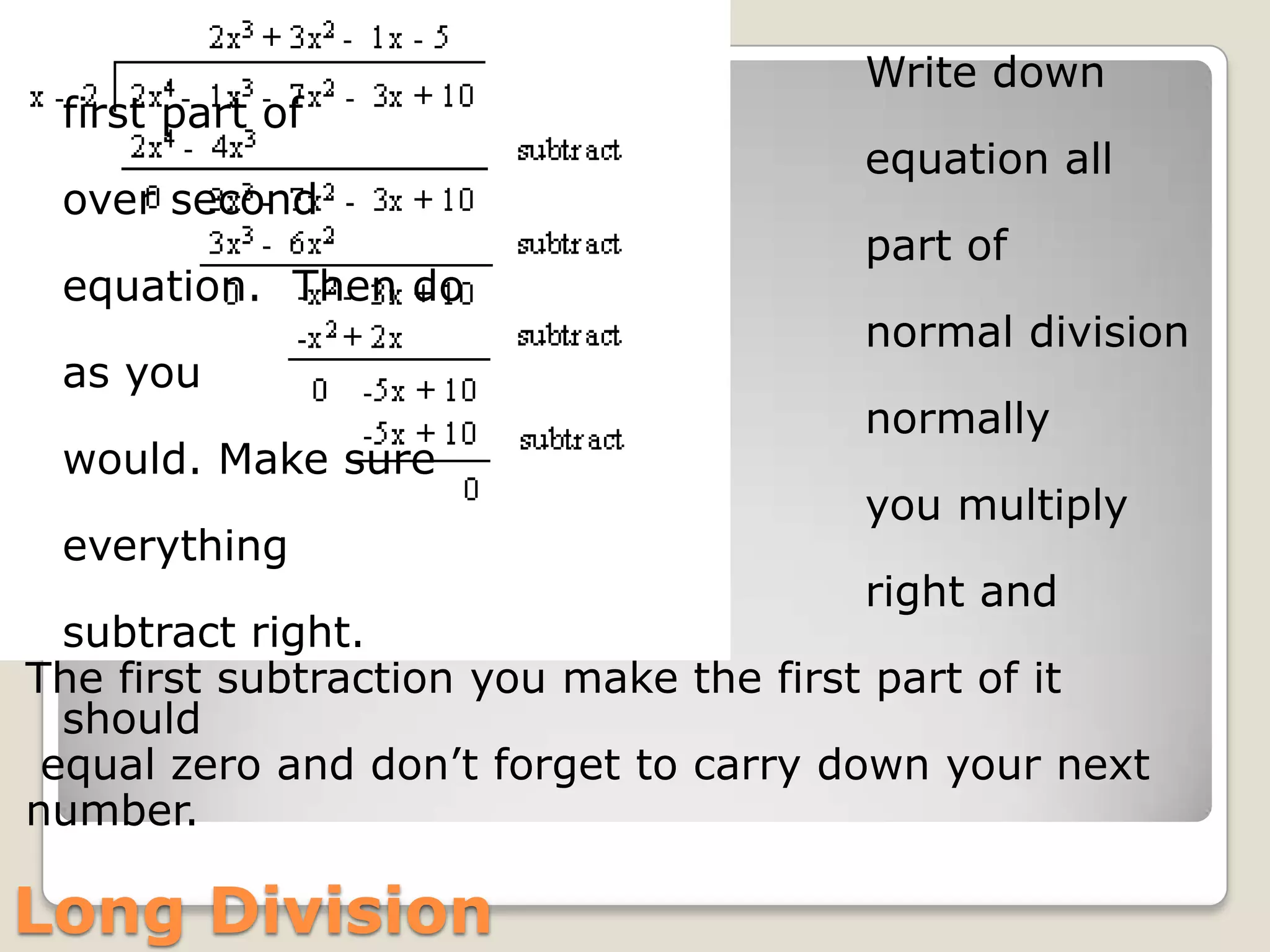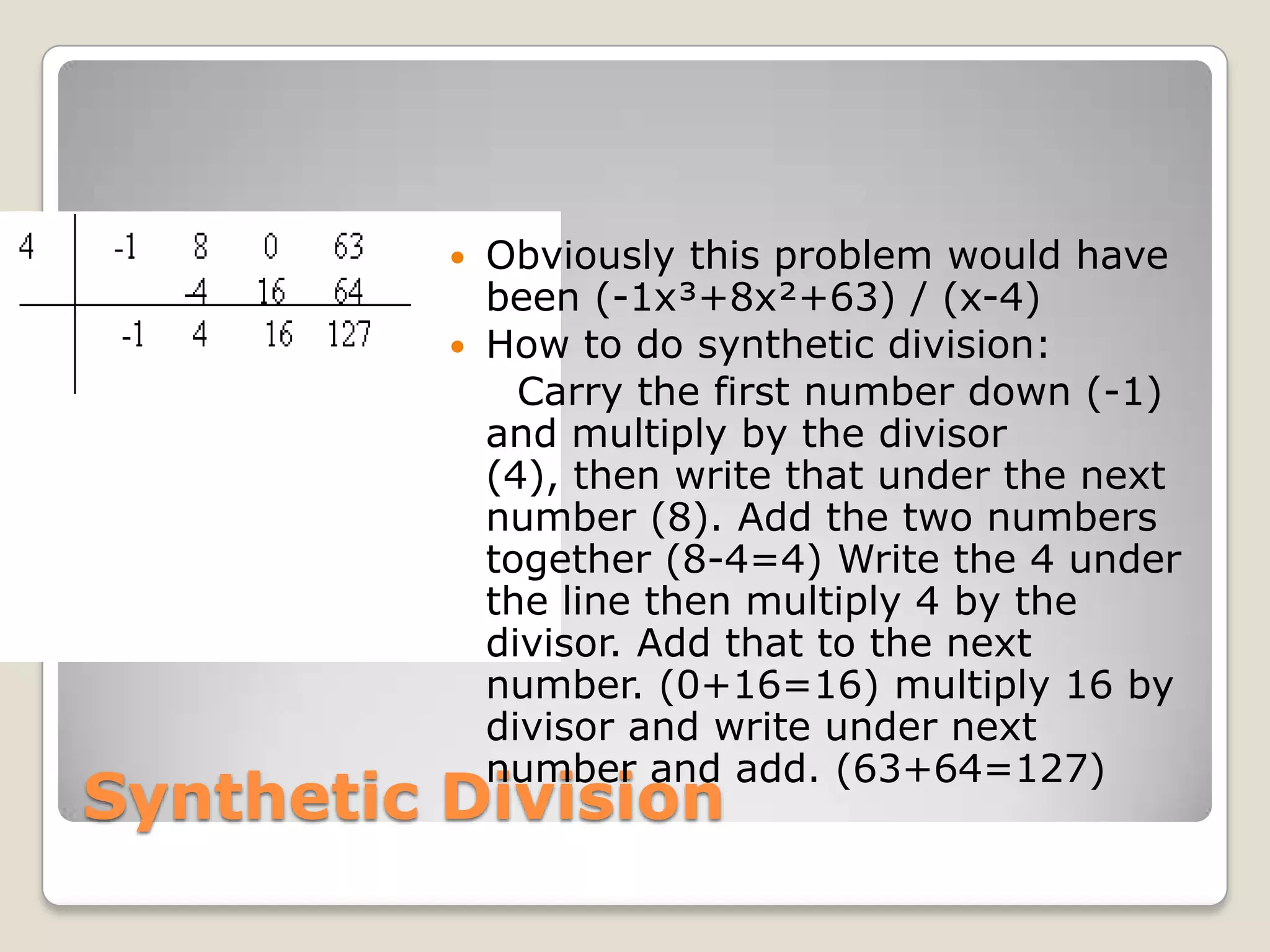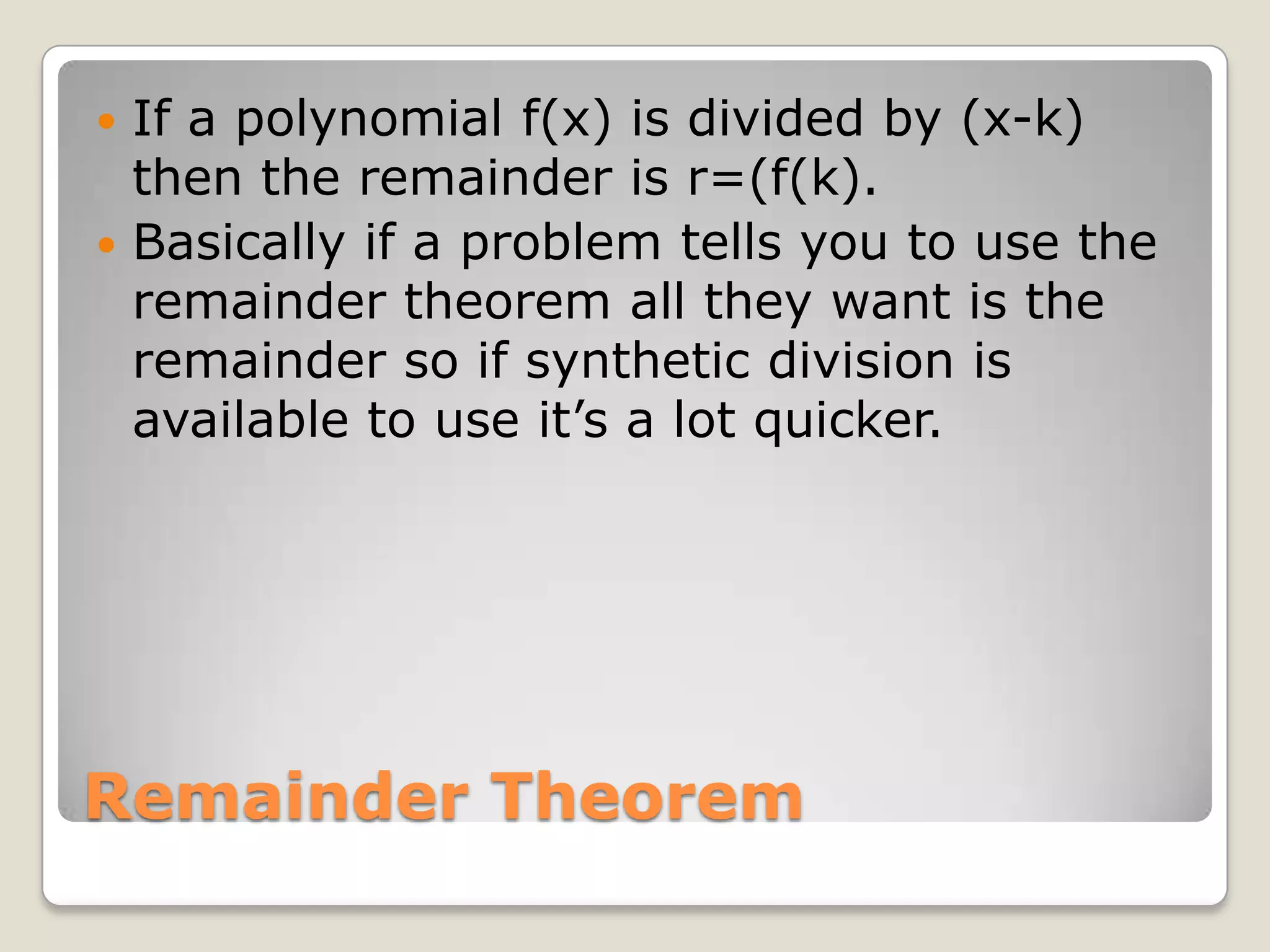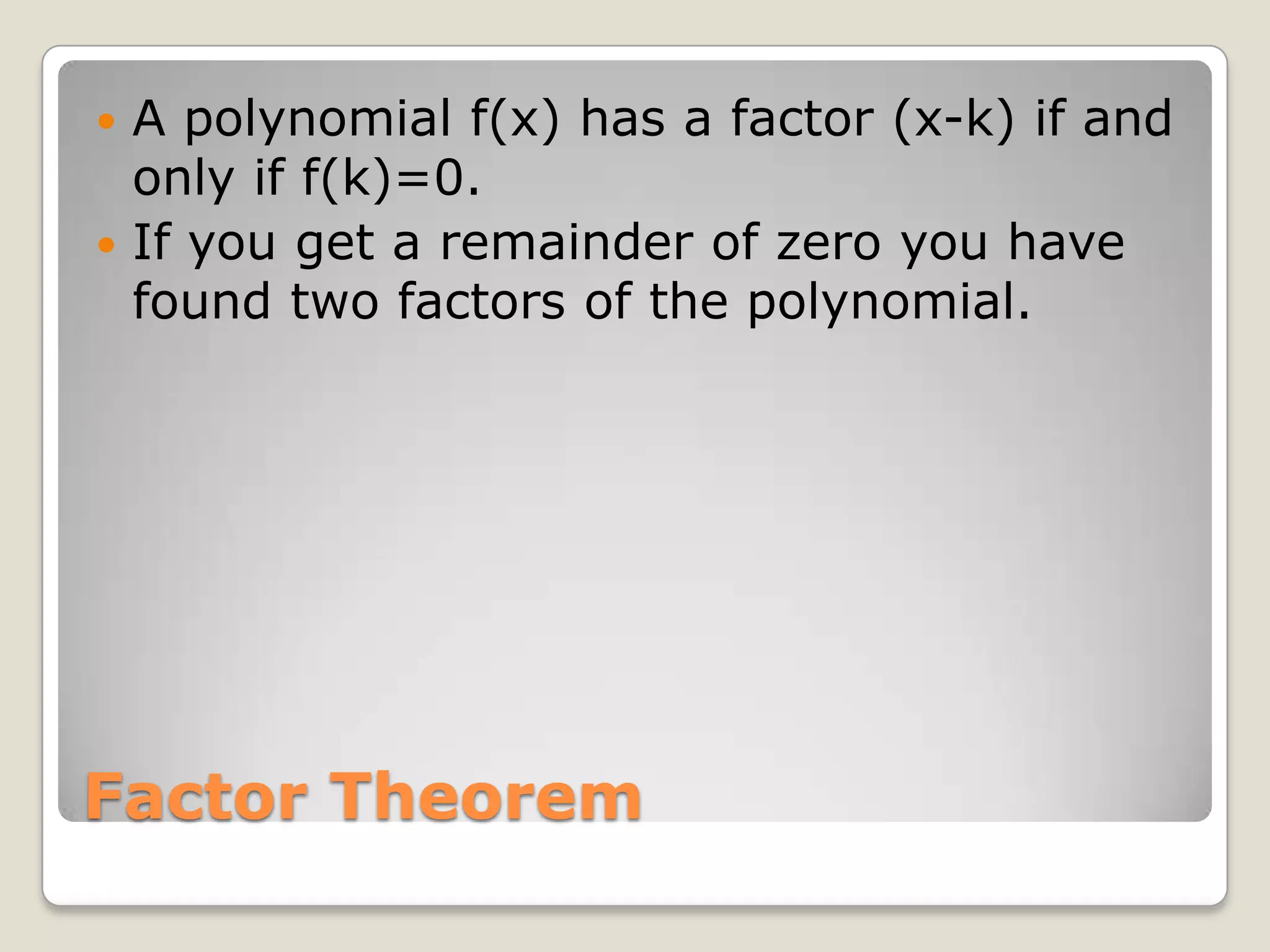This document provides an overview of key concepts in polynomial functions. It defines polynomials as functions where the exponents are positive whole numbers. It explains standard form, factored form, degrees, leading coefficients, roots, ends, and graphing behaviors. It also covers dividing polynomials using long division and synthetic division, and defines the remainder and factor theorems. Specifically, the remainder theorem states the remainder of dividing a polynomial f(x) by (x-k) is r=f(k), while the factor theorem says a polynomial f(x) has a factor (x-k) if and only if f(k)=0.

